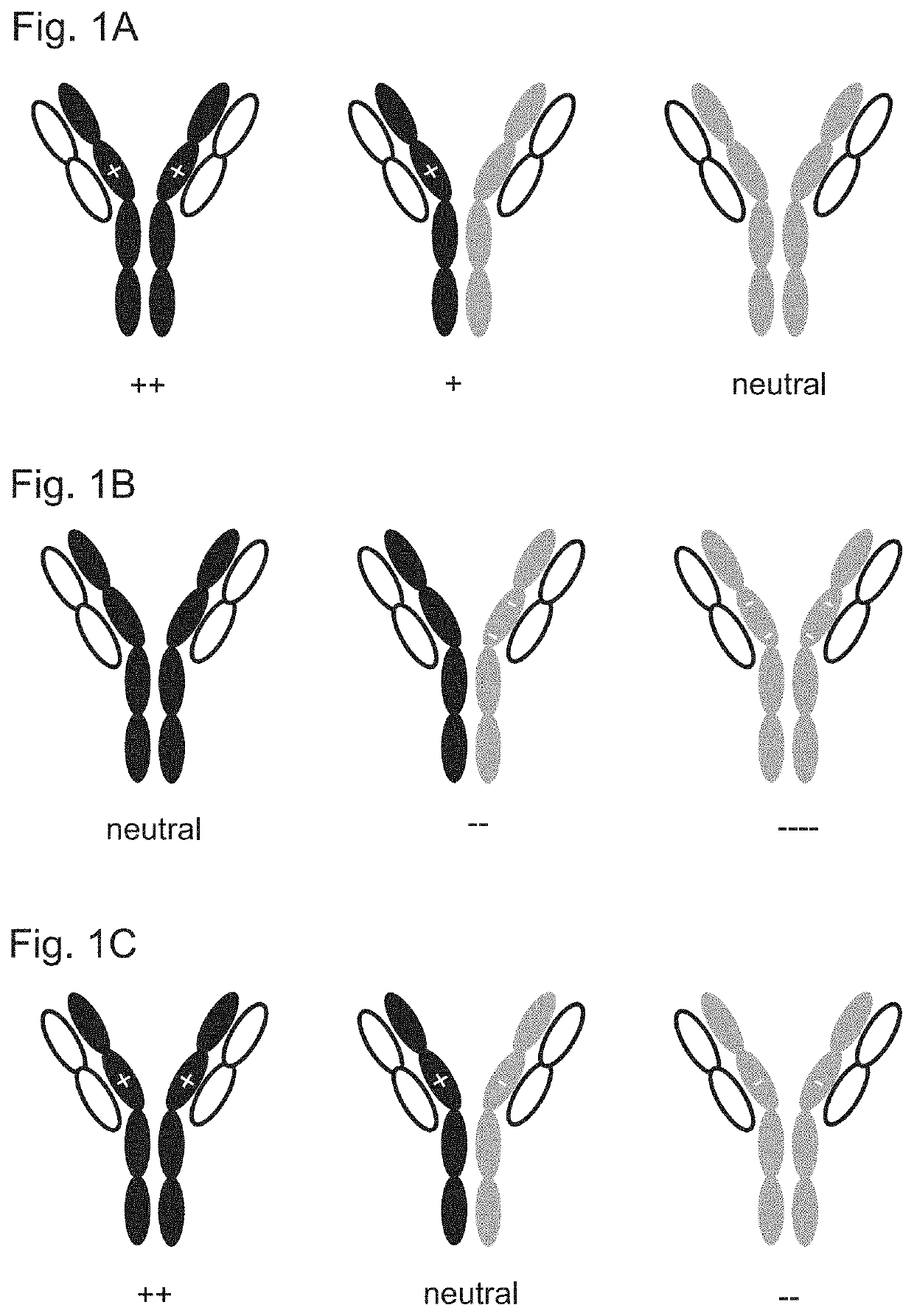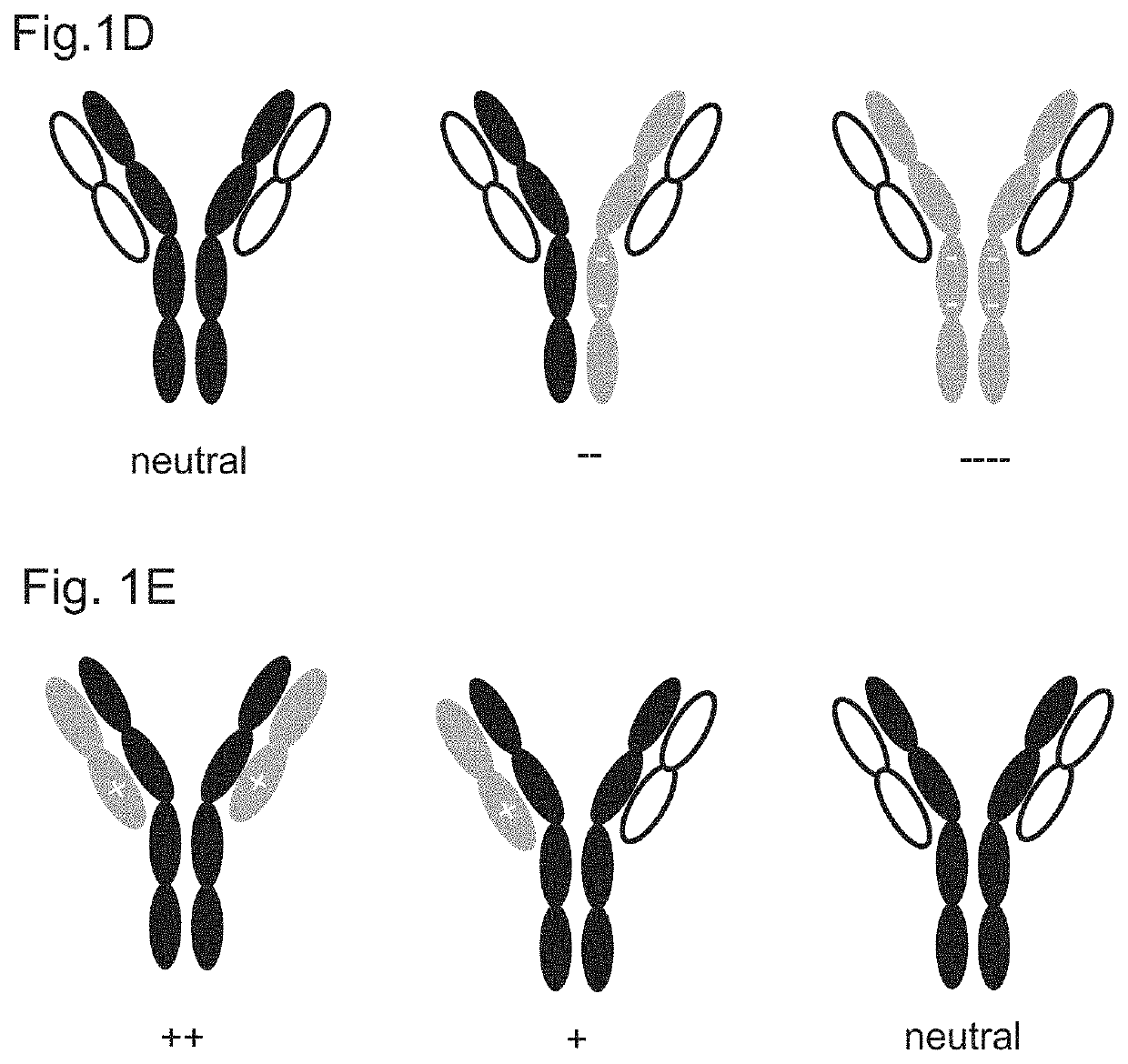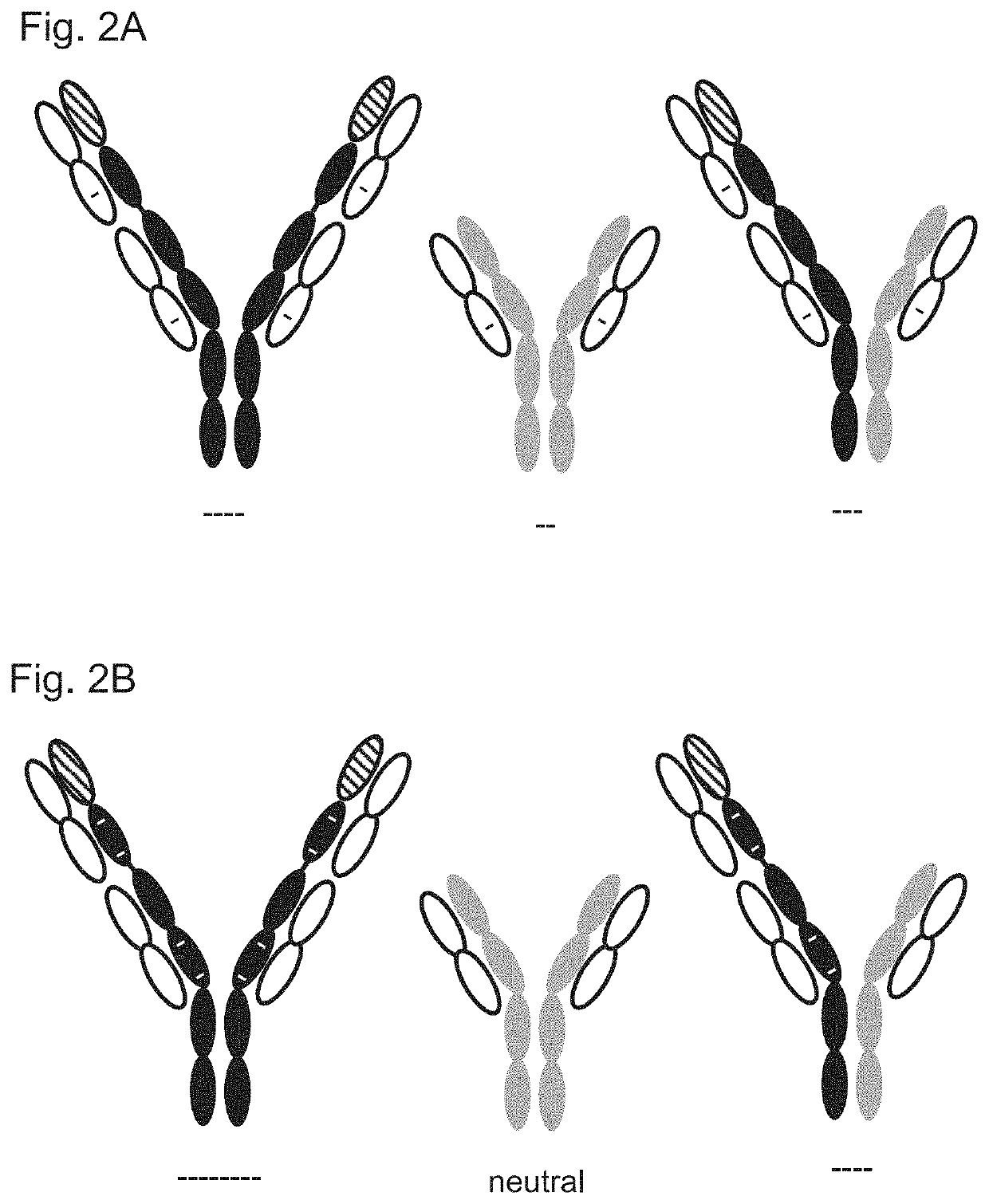Variant domains for multimerizing proteins and separation thereof
a multimerizing protein and variable domain technology, applied in the field of variable domains for multimerizing proteins, can solve problems such as non-functional binding sites
- Summary
- Abstract
- Description
- Claims
- Application Information
AI Technical Summary
Benefits of technology
Problems solved by technology
Method used
Image
Examples
example 1
ng Non-Surface Residues for Separation Design
[0330]From structural information of an IgG1 CH1 sequence with a VL domain, surface, non-surface exposed and buried amino acid residue positions within the CH1 region were identified by use of the program GETAREA 1.0 using default parameters. Negi et al., “Solvent Accessible Surface Areas. Atomic Solvation Energies, and Their Gradients for Macromolecules”, Last modified on Wed 17th April, 3:00 PM, 2015. A model of the CH1-CL domain with the sequence of table 1 and FIG. 13C was submitted to the Swiss-model website (Arnold K. Bordoli L, Kopp J, Schwede T. The SWISS-MODEL workspace: a web-based environment for protein structure homology modelling. Bioinformatics, 2006 Jan. 15:22(2):195-201). A high quality homology model was obtained by aligning (with greater than 95% identity over the full length of the CH1 region) to PDB structure GC6X.pdb (A 1.99 Å crystal structure of Middle-East Respiratory Syndrome coronavirus neutralizing antibody JC5...
example 1 b
esign
[0335]Non-surface and buried positions in CH1 are varied to change the charge of multimerizing proteins incorporating these immunoglobulin regions. In total 13 exemplary variant CH1 regions are produced and incorporated into mono, and multispecific antibodies for comparison against mono, and multispecific antibodies with wild type CH1 regions. Constructs to express these molecules comprising these separation CH1 regions are prepared as follows.
[0336]The fragment encoding the CH2 and CH3 domain was obtained from the MV1708 construct. MV1708 was chosen as it contains a unique BspEI site at the N terminus of CH2. The fragment encoding the variable heavy chain MF1122 was used, which has a BstEII on its C-terminus. MF1122 was chosen because it does not present any issues with production, purification or CIEX and has an average retention time on CIEX of ˜13.4 min at a pI (VH) of 8.64. The constructs used for cloning and the cloning strategy are displayed in FIG. 12.
[0337]Vector MV170...
examples 1 c
nd Purification of Antibodies with CH1 Variants
[0341]All used buffers were made using Versylene (endotoxin-free and sterile) water. Endotoxin was removed from glasswork. Quixstand. Akta-explorer by incubation with 0.1M NaOH for at least 16 hours. Hek293 cells were transfected with endotoxin-free plasmid DNA. Six days post-transfection conditioned medium containing recombinant antibody was harvested by low-speed centrifugation (10 minutes, 1000 g) followed by high-speed centrifugation (10 minutes, 4000 g). A 100 ul sample was stored at 4° C.
[0342]MabSelectSureLX (GE healthcare life sciences) purification was performed: The antibody was bound batch-wise to 2 ml MabSelectSureLX for 4-hours. MabSelectSureLX sepharose containing bound antibody was harvested by centrifugation and transferred into gravity flow column. Non-specifically bound proteins were removed by washing the column with PBS, PBS containing 1 M NaCl and PBS. The bound antibody was eluted using 100 nM citrate pH 3.5 and 5 ...
PUM
| Property | Measurement | Unit |
|---|---|---|
| retention time | aaaaa | aaaaa |
| pH | aaaaa | aaaaa |
| pH | aaaaa | aaaaa |
Abstract
Description
Claims
Application Information
 Login to View More
Login to View More - Generate Ideas
- Intellectual Property
- Life Sciences
- Materials
- Tech Scout
- Unparalleled Data Quality
- Higher Quality Content
- 60% Fewer Hallucinations
Browse by: Latest US Patents, China's latest patents, Technical Efficacy Thesaurus, Application Domain, Technology Topic, Popular Technical Reports.
© 2025 PatSnap. All rights reserved.Legal|Privacy policy|Modern Slavery Act Transparency Statement|Sitemap|About US| Contact US: help@patsnap.com



